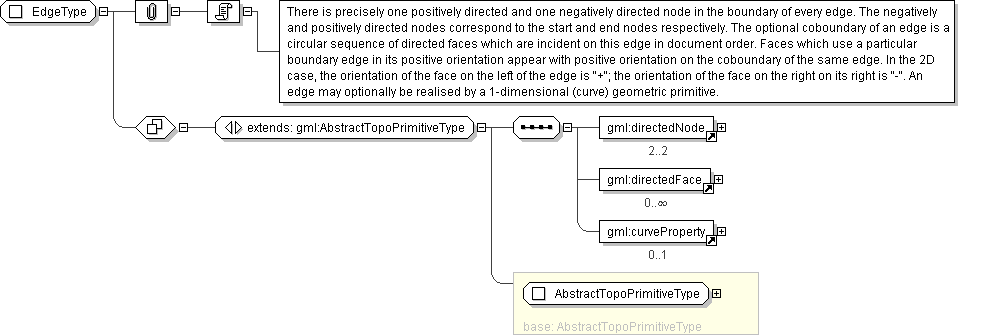Diagram

| Super-types: | gml:AbstractGMLType < AbstractTopologyType (by extension) < AbstractTopoPrimitiveType (by extension) < EdgeType (by extension) |
|---|---|
| Sub-types: | None |
| Name | EdgeType |
|---|---|
| Abstract | no |
| Documentation | There is precisely one positively directed and one negatively directed node in the boundary of every edge. The negatively and positively directed nodes correspond to the start and end nodes respectively. The optional coboundary of an edge is a circular sequence of directed faces which are incident on this edge in document order. Faces which use a particular boundary edge in its positive orientation appear with positive orientation on the coboundary of the same edge. In the 2D case, the orientation of the face on the left of the edge is "+"; the orientation of the face on the right on its right is "-". An edge may optionally be realised by a 1-dimensional (curve) geometric primitive. |
